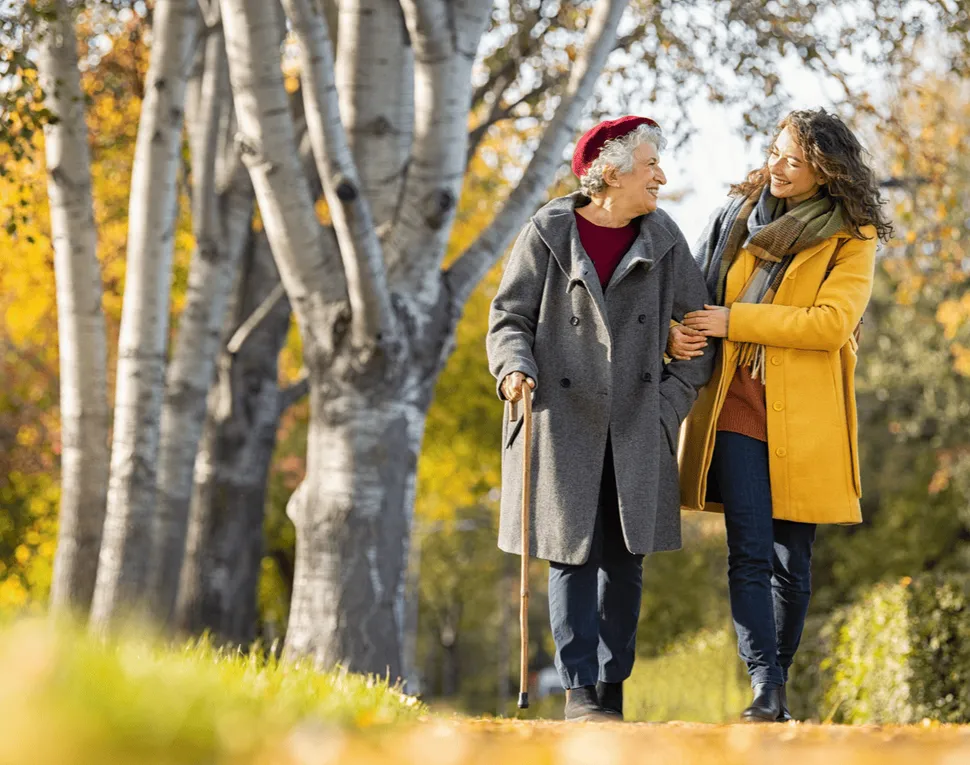Gaining Strength With Low Impact Exercise for Acute Myeloid Leukemia Patients

BOTH HIGH IMPACT AND LOW IMPACT WORKOUTS PROVIDE BENEFITS
There are different intensities to exercise that provide a lot of benefit to living a healthy lifestyle. Both high-impact and low-impact workouts can be equally beneficial.
Somedays finding exercises to mix into your normal, busy routine can feel exhausting or discouraging. Trying something new shouldn’t discourage but instead help your mind and muscles work together to find new coordination. Making sure your exercises don’t add too much strain to already stressed joints and bones is always something to remember.
Low-impact exercises are an effective way to work on strength and cardiovascular fitness without adding too much extra stress on our joints and tendons. A good rule of thumb for knowing if it’s low-impact is if you keep at least one foot on the ground during exercise and it is easier on your body. Don’t be fooled: low impact exercises can be just as challenging as high impact. Cardio isn’t the only form of exercise that can be low impact. Strength training with dumbbells, resistance bands and body weight are also considered low-impact workouts that bring a lot of benefit.
BENEFITS OF LOW IMPACT TRAINING
Low impact training is beneficial because it:
- Is easy on the joints
- Builds consistency with training
- Improves cardiovascular endurance
- Develops kinesthetic awareness
- Reduces the risk of disease and other condition
- Improves bone density
- Improves cognition
- Relieves stress
- Boosts mental wellness
LOW IMPACT STRENGTH TRAINING
Low-impact strength training can look like:
- Body-weight squats or squats to a chair
- Bicep curls with dumbbells, resistance bands or canned goods to get creative
- Unweighted arm circles and arm raises (both lateral and front)
- Deadlifts - practicing the movement, you don’t have to load with weights (Stand with your feet shoulder-width apart, hinge at the hips, lowering to the shins, Drive your heels into the ground, push your hips forward (careful not to overextend) and squeeze your glutes as you return to the starting position)
- Step-ups - can use a step and go up and down on the one step or walking your stairs
- Planks - can be performed from a chair, the couch, or ground
- Chest press - either laying on your back or performing a chest squeeze while sitting by engaging your chest muscles can help to support your back
GREAT EXAMPLES OF LOW IMPACT CARDIO
- Walking- getting out with your family, dogs, walking your city or in nature is a great way to get some steps in and raise your heart rate without adding impact
- Elliptical- skip the treadmill on this one and try the elliptical for less impact (change and play with the resistance to add some challenge if you are able)
- Stair climbing- great cardio and strength workout just going up and down your stairs- improve your balance, hold to the railing if you need
- Biking - stationary or outdoors makes for great exercise
- Tai-chi - focuses on balance and coordination
- Hiking - if you have a hard time with balance you can get some hiking poles to help with your balance, but don’t go too steep until you’ve mastered the stairs
- Yoga and Pilates - great balance, coordination and strength gained from both
- Swimming or water aerobics - especially in the summer it’s great to cool off in the water and use the water as low-impact resistance as you move through the water
- Golf - you can work on your core strength with the rotation of your swing, being careful to not overdo it (skip the golf cart and utilize a pushcart if you can)
The biggest factor when starting or continuing exercise is to listen to your body. If you need to rest, rest. If you need to just slow down, then do so. Getting enough rest is also essential for strengthening our bodies, but don’t be afraid to move. Keep it up AML fighters!
Active for AML 30 Day Challenge
If you're ready to join a community of AML patients and caregivers who are striving to add more minutes of activity to their day, join us for our Active for AML Challenge taking place during the month of April. Download the HealthTree Moves app and register for the upcoming Active for AML challenge. More information on how to join is found here. We can't wait to work towards a collective goal of 100,000 minutes between all participants together!
BOTH HIGH IMPACT AND LOW IMPACT WORKOUTS PROVIDE BENEFITS
There are different intensities to exercise that provide a lot of benefit to living a healthy lifestyle. Both high-impact and low-impact workouts can be equally beneficial.
Somedays finding exercises to mix into your normal, busy routine can feel exhausting or discouraging. Trying something new shouldn’t discourage but instead help your mind and muscles work together to find new coordination. Making sure your exercises don’t add too much strain to already stressed joints and bones is always something to remember.
Low-impact exercises are an effective way to work on strength and cardiovascular fitness without adding too much extra stress on our joints and tendons. A good rule of thumb for knowing if it’s low-impact is if you keep at least one foot on the ground during exercise and it is easier on your body. Don’t be fooled: low impact exercises can be just as challenging as high impact. Cardio isn’t the only form of exercise that can be low impact. Strength training with dumbbells, resistance bands and body weight are also considered low-impact workouts that bring a lot of benefit.
BENEFITS OF LOW IMPACT TRAINING
Low impact training is beneficial because it:
- Is easy on the joints
- Builds consistency with training
- Improves cardiovascular endurance
- Develops kinesthetic awareness
- Reduces the risk of disease and other condition
- Improves bone density
- Improves cognition
- Relieves stress
- Boosts mental wellness
LOW IMPACT STRENGTH TRAINING
Low-impact strength training can look like:
- Body-weight squats or squats to a chair
- Bicep curls with dumbbells, resistance bands or canned goods to get creative
- Unweighted arm circles and arm raises (both lateral and front)
- Deadlifts - practicing the movement, you don’t have to load with weights (Stand with your feet shoulder-width apart, hinge at the hips, lowering to the shins, Drive your heels into the ground, push your hips forward (careful not to overextend) and squeeze your glutes as you return to the starting position)
- Step-ups - can use a step and go up and down on the one step or walking your stairs
- Planks - can be performed from a chair, the couch, or ground
- Chest press - either laying on your back or performing a chest squeeze while sitting by engaging your chest muscles can help to support your back
GREAT EXAMPLES OF LOW IMPACT CARDIO
- Walking- getting out with your family, dogs, walking your city or in nature is a great way to get some steps in and raise your heart rate without adding impact
- Elliptical- skip the treadmill on this one and try the elliptical for less impact (change and play with the resistance to add some challenge if you are able)
- Stair climbing- great cardio and strength workout just going up and down your stairs- improve your balance, hold to the railing if you need
- Biking - stationary or outdoors makes for great exercise
- Tai-chi - focuses on balance and coordination
- Hiking - if you have a hard time with balance you can get some hiking poles to help with your balance, but don’t go too steep until you’ve mastered the stairs
- Yoga and Pilates - great balance, coordination and strength gained from both
- Swimming or water aerobics - especially in the summer it’s great to cool off in the water and use the water as low-impact resistance as you move through the water
- Golf - you can work on your core strength with the rotation of your swing, being careful to not overdo it (skip the golf cart and utilize a pushcart if you can)
The biggest factor when starting or continuing exercise is to listen to your body. If you need to rest, rest. If you need to just slow down, then do so. Getting enough rest is also essential for strengthening our bodies, but don’t be afraid to move. Keep it up AML fighters!
Active for AML 30 Day Challenge
If you're ready to join a community of AML patients and caregivers who are striving to add more minutes of activity to their day, join us for our Active for AML Challenge taking place during the month of April. Download the HealthTree Moves app and register for the upcoming Active for AML challenge. More information on how to join is found here. We can't wait to work towards a collective goal of 100,000 minutes between all participants together!

about the author
Linnley Sweeney
Linnley joined HealthTree in January 2020 as the Fitness Events Manager. Her husband is a childhood cancer survivor as well as a cancer biologist. Finding a cure, better treatments, and balance through treatments is what drives their family. Linnley is an Advanced Cancer Exercise Specialist and focuses on finding what you can do rather than can't.
More on Navigating Your Health
Trending Articles

Get the Latest Acute Myeloid Leukemia Updates, Delivered to You.
By subscribing to the HealthTree newsletter, you'll receive the latest research, treatment updates, and expert insights to help you navigate your health.
Together we care.
Together we cure.
3x Faster.









